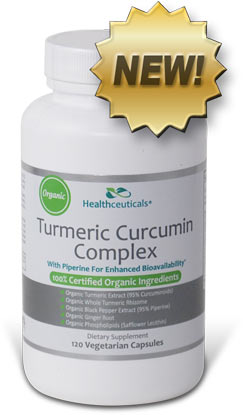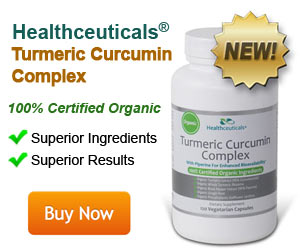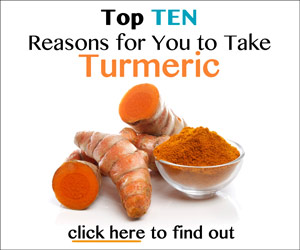
Escherichia coli
E. coli is a gram negative type of bacteria that can cause infections in the: (v.18, 80)
- Bladder
- Intestinal tract
- Kidneys
- Stomach
- Upper respiratory tract (including sinuses)
- Urinary tract
Symptoms of Infection
A common symptom associated with E. coli infections is diarrhea. In severe cases, E. coli can cause potentially fatal systemic infection and septic shock. (v.18)
Non-Curcumin Turmeric Compounds that Block Escherichia coli
Research (mostly lab studies) show that individual compounds in turmeric also have antibacterial effects against E. coli. These include:
- 1,8-cineole (v.67, 73)
- Α-phellandrene (v.73, 78, 87)
- Α-pinene (v.67, 78, 81, 87)
- α-terpineol (but not against drug-resistant strains) (v.75-76, 81-82)
- Ar-turmerone (v.5, 72)
- β-pinene (v.67, 78, 81, 87)
- Borneo (v.74-75, 81)
- Caffeic acid (v.75, 83)
- Camphor (v.67, 74-75)
- Curlone (v.5, 73, 74)
- Eugenol (v.75-76, 81-82, 87)
- γ-terpinene (v.73, 75-76)
- Geraniol (v.76-77, 81)
- Limonene (v.67, 75-76, 81, 87)
- Quercetin (v.83-84)
- ρ-cymene (v.73, 78, 87)
Some of these performed better against E. coli than the antibiotic streptomycin in the disc-diffusion type of test (e.g., 1,8-cineole and camphor). The pinenes both showed inhibition zones against E. col over 83% that of streptomycin. Limonene was 75% effective as against E. coli as streptomycin. (v.67)
However, others studies suggest that some of these same compounds show little activity against E. coli by themselves. These include the pinenes, limonene, ρ-cymene, and γ-terpinene. (v.79)
Effects of Turmeric and Curcumin on Escherichia coli
| TYPE OF STUDY | EFFECT OF TURMERIC EXTRACTS and CURCUMIN |
|---|---|
Industrial - Textiles |
Cotton fabric was treated with chitosan and then dyed with curcuminoids extracted from turmeric. The turmeric-based dye reduced E. coli bacterial growth by 100%. (v.11, 40)
|
Lab |
Whole herb turmeric extracts (25% weight per volume in ethanol) and 0.3 ml of turmeric juice showed antibacterial activity against E. coli. However, other types of turmeric rhizome extracts showed no effect against the bacteria. (v.5, 89-90) |
Lab |
Foam infused with curcumin combined with visible light phototherapy killed 81% of E. coli organisms. However, curcumin's effectiveness depended on the type of foam it was dissolved in. When used in cyclodextrin foam, curcumin had no effect, but it was highly effective in polyethylene glycol 400. (v.38) |
Animal |
Agar films are flexible, rubbery wound dressings. When combined with turmeric extract, the agar composite film showed antimicrobial effect against E. coli and other bacteria. The turmeric dressing also healed wounds between 21-28.5% faster than plain agar films. (v.26) The turmeric film's antimicrobial strength was not as strong as silver agar composite film. Silver has often been used in wound dressings because of its potent antimicrobial effects. However, while turmeric has a long record of safety towards human cells, multiple studies suggest that silver dressings may actually slow down wound healing and are toxic. (v.26, 91) |
Lab |
Curcumin inhibits the formation of biofilm slime by E. coli bacteria. Biofilms protect bacteria from the immune system and antibiotic treatment. Despite this protection, curcumin also proved to be toxic to E. coli in biofilms. (v.35) |
Join the 1000s of People Who Are Discovering the Benefits of Turmeric.

Healthceuticals® Turmeric Curcumin Complex
100% Certified
Organic ingredients
- Organic Turmeric Extract - standardized to 95% curcuminoids.
- Organic Whole Turmeric - provides full spectrum antioxidant, anti-inflammatory turmeric benefits, including turmerones and numerous vitamins, minerals, and phytonutrients
- Organic Black Pepper Extract - standardized to 95% piperine; dramatically enhances bioavailablity.
- Organic Phospholipids - markedly improve absorption.
- Organic Ginger - works synergistically with turmeric to provide more powerful benefits.
- Absolutely FREE of potentially harmful additives and fillers such as magnesium stearate.




